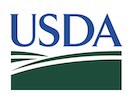The United States Department of Agriculture (USDA) has declared April 2022 Invasive Plant Pest and Disease Awareness Month (IPPDAM). This national outreach month is dedicated to highlighting the impact invasive plant pests and diseases have on plant health nationwide and educates Americans about the simple actions they can take to help reduce their spread. Hungry, invasive pests threaten our nation’s food crops, gardens, and natural resources. IPPDAM aims to raise public awareness about the threat, which can devastate livelihoods, food security, and forests.
“As people start to spend more time outdoors this spring, we ask them to remain vigilant for signs of invasive pests, which begin to emerge as the temperatures rise,” said U.S. Secretary of Agriculture Thomas J. Vilsack. “Invasive insects and plant diseases cost the U.S. an estimated $40 billion a year in damages to plants we depend on. It’s important to do what we can to slow their spread and reduce the impact they have on our communities.”
Many invasive plant pests and diseases are natural hitchhikers—making it easy for people to unintentionally move them to new areas. These nonnative pests can hide in untreated firewood, attach themselves to outdoor gear and vehicles, and take a ride in the mail. They can also hitch a ride to new areas on agricultural material such as soil, seeds, homegrown produce, and plants.
Invasive pests have few or no natural predators in their new environments and can quickly spread—disrupting ecosystems by pushing out native species and reducing biological diversity. Weather can magnify their impact. Climate change has increased the level of plant pest infestations and disease infection, allowed pests to produce more generations each year, and extended the suitable habitat for plant pests. To protect local ecosystems and our domestic food supply, it’s important to enlist the public in the effort to protect plant health.
 Animal and plant health inspection service
Animal and plant health inspection service+1 202 720 2791
Suzanne.M.Bond@aphis.usda.gov
www.usda.gov
